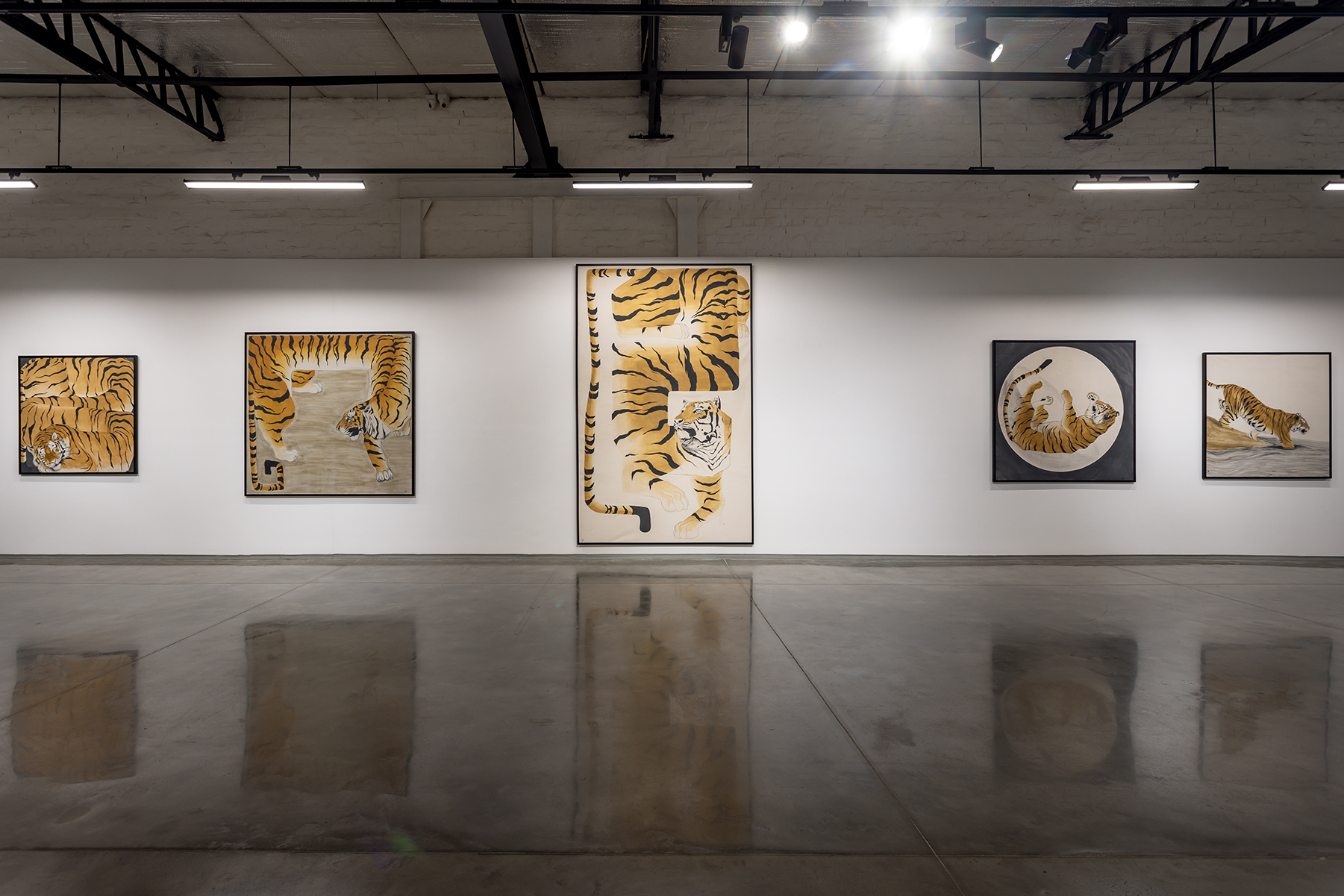Artist Biography Born in 1983, in Tokyo, Keita Miyazaki’s sculptures feature materials whose association suggests strident discord and unfamiliar visual language. Discarded car engine components are welded together and then combined with coloured origami-like folded paper and sewn felt, fashioning sculptures of contradiction and aesthetic intrigue. The juxtaposing of solid and universal materials such as metal against light and fragile paper and felt, escape formal paradigms, rather evoking a sense of post-apocalyptic reconciliation.
Signaling a formal departure from his hybrid biomorphic sculptures, some of Miyazaki’s latest body of work draws on the ‘Vanitas’ of seventeenth century Dutch painting igniting profound philosophical meditations on the transience of human existence; in response to the redundancy of our supposedly coveted industrial society, the fascination with ruins and the beauty inherent within them has informed Miyazaki’s whole practice from recuperating the relics of a defunct age to the insertion of found objects.


Miyazaki completed a PhD in craft metal casting at Tokyo University of the Arts and at the Royal College of Art. His work forms part of numerous private collections in the U.K, Italy, Switzerland, Ireland, Hong Kong, Japan, USA, India and UAE. Museum and corporate collections include: UAE Mortimer Collection, Centre Point, Ogi Kankou, Ltd. Japan, Victoria and Albert Museum, Daiwa Foundation, Mori Arts Centre Japan, Aoyama Spiral Hall Japan, Ogi Kankou Ltd, Sado Island, Niigata Prefecture Japan, Mortimer Collection London and Centre Point London. The artist lives and works between Tokyo and London.
About the Exhibition In Keita Miyazaki’s sculptures, parts from automobiles and handmade paper constructions are assembled in a way that each of these becomes something other than itself. The exhaust pipes are now branches on which vivid blooms thrive, appearing robust and astonishing. It is as if we have travelled away from an environment of function into an enclave of probabilities, where the pipe no longer billows smoke into the air, filling lungs with particulate matter as the metal body to which it would have been attached once moved capital forward. The skeleton of the car is now arrested, and scraps of it have become relics. In this new form, they make us consider the spectre of planetary catastrophe, death and extinction, and the subsequent alteration in the flow of time.

Miyazaki’s understanding of material and production shifted drastically in 2011 in the aftermath of the Tōhoku earthquake and tsunami that led to the Fukushima nuclear accident. In Tokyo, Miyazaki watched as entire towns were swept away, as mushroom clouds rose into the sky yet again, and radiation began to leak into the affected areas and beyond. Theorist Sabu Kohso has described Fukushima as “a catastrophe without end” not only because containment is more or less impossible but also because the possibility of such an accident itself is indicative of the organisation of power in a capitalist world order. Although it may have seemed like Fukushima would mark an end, it did not, and the march of the nuclear nation-state continued. Fukushima in Kohso’s understanding is not an isolated incident but a metaphor for cycle after cycle of disaster and its wilful perpetuation across the globe.
For Miyazaki, some of the most striking images that emerged after Fukushima were those of all kinds of debris, left standing or seen floating out to sea. These new sites of overnight ruin were once stages for the enactment of ordinary life but now held the threat of danger, invisible yet permeating the psyche of one and all. Miyazaki was particularly drawn to abandoned cars because they were symbolic of Japan’s automotive industry that drove the country’s economy forward after the devastation of the Second World War — an industry that, defying logic, was possible because of energy generated through nuclear reactors. With sensitivities nurtured by his training in craft metal casting, Miyazaki began collecting car parts, seeking a mode of expression relating to the collapse that he had witnessed. Miyazaki thus began creating assemblages that seem to have an existence outside the cycle of wreckage and reconstruction, objects beyond the idea of the apocalypse. Made from the body of the dismantled and obsolete machine, Miyazaki’s sculptures are botanical, with suggestion of movement that is nearly imperceptible. They indicate growth and renewal, hybridity and glitching. Their presence rearranges the order of things and disrupts the notion of the linear motion of labour. They are flowers blooming at the end of the world.
Zeenat Nagree – 2024
About The Gallery
Akara blends the rich traditions of modern art with the innovations of contemporary practice. Nestled in the art district of Mumbai, Akara operates across two spaces: Akara Modern, one of the leading modern art galleries in India since 2015, and Akara Contemporary, a new platform for the current and next generation of South Asian and international artists. Across both galleries, Akara centres India and South Asia within the continuum of international art history and brings alternative narratives and realities to the foreground of global discourse. Through exhibition programming, artist representation, institutional partnerships, art fairs, gallery collaborations, and art advisory, from which it first was established in 2009, Akara aspires to transcend borders in its many forms, from the artistic to the geographic.

Exhibition Title: Blooming At The End Of The World
Artists: Keita Miyazaki
Exhibition Dates: 14th March – 20th April, 2024
Venue: Akara Contemporary, 3C Amarchand Mansion, 2nd Floor, 16 Madam Cama Road, Colaba, Mumbai 400001 Gallery Timings: 11:00 am to 6:30 pm (Tuesday to Saturday)
Website: www.akaraart.com Instagram: @akaraart For additional information, please contact: Shreemoyee Moitra | shreemoyee@akaraart.com | Meghna Shah | meghna.akaraart@gmail.com |




